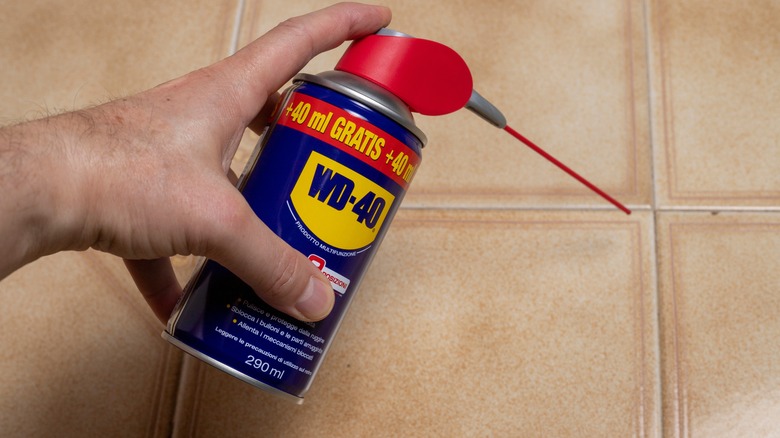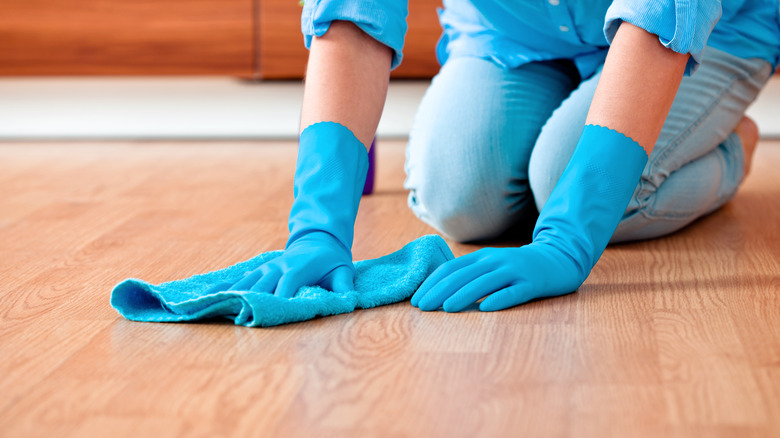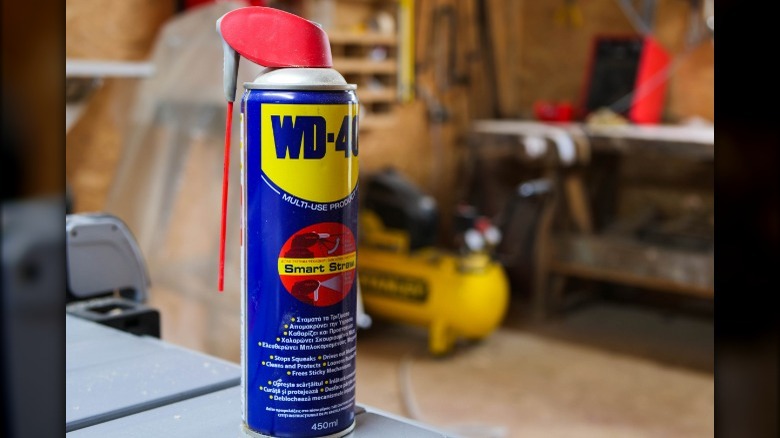A Scuffed Up Floor Has No Chance When Faced With WD-40
Your floors take a beating every day. Over time, they can lose their luster and become marred by scratches and scuffs. Despite your best efforts to keep them clean and gleaming, these imperfections can detract from the overall look of your living spaces and even shorten the lifespan of your flooring. Fortunately, there is a trusted solution that has been around for decades: WD-40.
With its exclusive formula, WD-40 can penetrate and eliminate blemishes and flaws, resulting in a fresh and renewed appearance for your floors. It's a powerful, accessible, affordable tool that can quickly and easily remove scuffs as well as sticky substances left behind by shoes and paws. And if you're dealing with tough stains like rust or coffee on tile flooring, WD-40 can take care of those too. With its impressive capabilities, this product can effortlessly restore the shine and beauty of some floors, such as laminate, tile, and vinyl flooring.
WD-40 scuff removal method
First, prep the area by sweeping or vacuuming the floor to remove all dirt and debris. Next, gather your materials; a can of WD-40 and a soft, clean cloth or paper towel. Shake the can well and spray a small amount onto the cloth. Ensure that the cloth is damp but not soaked. Before applying it to the whole surface, test WD-40 on a small, inconspicuous area of the floor.
To remove the scuff marks, gently rub the affected area in circular motions with light pressure. If the scuff marks are stubborn or deep, repeat the process and apply more WD-40 as needed until the marks are gone. After removing the scuff marks, use a clean, dry cloth or paper towel to wipe away any excess WD-40 residue from the floor. This final step ensures a polished finish and leaves your floor looking good as new.
Using WD-40 safely and effectively
It's important to avoid using WD-40 on porous surfaces like unfinished wood or unsealed stone, as it can cause damage by penetrating the surface. When using WD-40, make sure there is enough ventilation as it has a strong odor. To prevent accidents, keep WD-40 away from flames or sparks as it is flammable. It's best to store it in a cool, dry place, away from heat sources and direct sunlight.
WD-40 is not just great for reviving scuffed floors; it also has several other uses in floor maintenance. For instance, it can dissolve and lift stubborn stains such as adhesive residue, crayon marks, or grease spots. To use, apply a small amount to the affected area, let it sit for an hour, and then wipe it away with a cloth or sponge. WD-40's lubricating properties also make it ideal for eliminating squeaks and creaks caused by floorboards or door hinges. Apply a small amount directly to the problem area, work it in with a cloth, and enjoy the silence. Always test WD-40 in a small, inconspicuous area before using it for alternative purposes to ensure compatibility and desired results.


